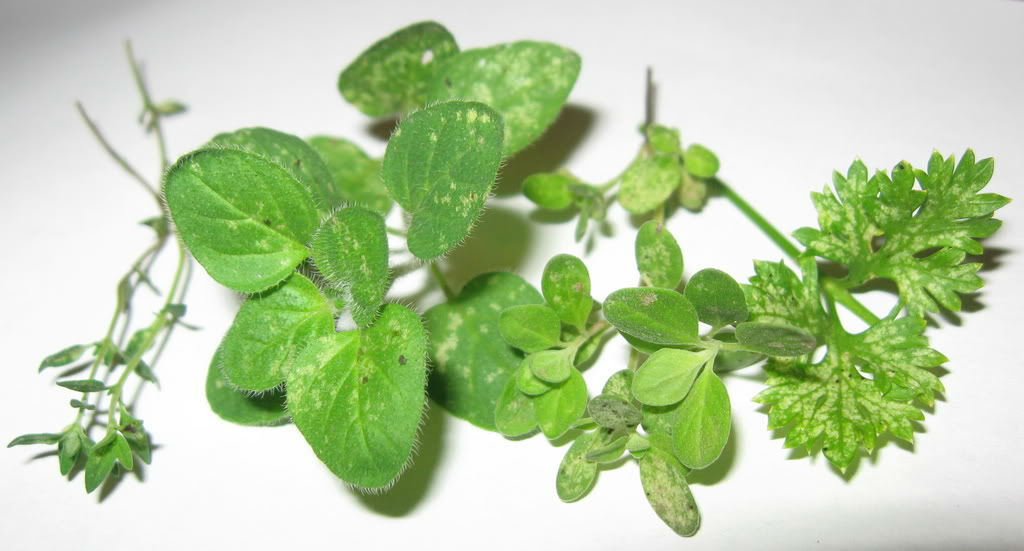![]()
In this issue:
- February in the Garden
- Planting Asparagus Crowns
- Gardenerd Tip of the Month: Spider Mites
- Gardenerd Product of the Month: Gardening for Geeks
1. February in the Garden
February is the month for lovers. Whether you have a Significant Other or not, love can be found in the garden. We nurture seeds into fruit, we steward our soil and love what microbes can do when soil is healthy. We’re gardenerds, and gardening = love.
In our test garden, we’re harvesting radishes, lettuces, cilantro, kale, broccoli, kohlrabi and shelling peas. We started seeds for more lettuces, kale and arugula. We even started seeds for sweet corn. We start early on corn, and try for a second crop in early summer. We also planted asparagus crowns (find out how below). Now is the time to start seeds for tomatoes, peppers, eggplant and other warm-season crops. Don’t forget to prep beds with compost before planting this spring. Read our spring planting guide to help you along this season.
New to gardening? Live in Los Angeles? Join our Santa Monica College classes to learn all you need to know to get started. Find details and registration for Basic Organic Gardening 101 here. Hope you can join us!
Happy Gardening,
Christy
2. Planting Asparagus Crowns

Asparagus is a commitment, that’s why it’s so expensive. It takes 3 years to establish new plantings and you can’t harvest for at least a year. So why bother? Because home-grown asparagus is the best thing ever, and once you plant, crowns produce for up to 20 years.
I wish I had invested the time in my early gardening years, but I let the commitment scare me off. Don’t let the same thing happen to you. Go for it! Make the leap and you’ll be happy you did in three years when you’re eating free asparagus in late spring.
Revisit this archival blog post about growing asparagus crowns for details on how to plant your patch. Here are some tips:
- Designate a permanent spot
- Don’t skimp – dig the trench and amend like crazy. Just do it.
- Get good quality crowns suited to your climate. We like this supplier.
- Wait. Avoid harvesting in year 1. Barely harvest in year 2. Then it’s all yours!
3. Gardenerd Tip of the Month – Spider Mites

A question (a plea, really) came in to Ask Gardenerd last week from Tammy:
“How do I get rid of spider mites?? They are driving me CRAZY!!! Taking over my eggplants now, and oftentimes my tomatoes… HELP!!! “
Tammy, we hear you. Spider mites can be daunting to deal with. Luckily there are several holistic approaches you can take to rid or drastically reduce the problem.
- Feed your tomatoes with worm castings – worm castings contain chitinase, an enzyme that dissolves the exo-skeletons of soft-bodied insects. Spider mites are soft-bodied insects. Plants take up chitinase into their leaves, the spider mites ingest the chitinase when they eat the leaves (or suck on the leaves, that is), then they wonder why they’re falling apart. That’s the non-scientific explanation of how chitinase works.
- Apply compost tea – good quality compost tea and a sprayer are your best friends here. Mites are part of the Soil Food Web and there are natural predators that exist within that Soil Food Web. We like the Solo backpack sprayer for the job. It allows you to spray microbe-rich tea on the leaf surfaces – tops and bottoms – to coat the leaves with predator microbes that consume spider mites.
- Get mite predators – Phytoseiulus persimilis is a predatory mite that eats spider mites but not your food crops. You can import them into your garden to handle the problem for you. Use this in combination with feeding and compost tea for the most effective result.
Air circulation is key. Clear away overgrown vines and jet blast any shrubs that serve as housing for these mites. Open up your garden to good air circulation and you’ll also reduce instances of powdery mildew and other fungal infestation.
Good luck, Tammy, and thanks for writing in. We hope this helps!
4. Gardenerd Product of the Month – Gardening for Geeks
Spring is coming. Get the knowledge you need to build that new raised bed, start a new garden, plan your spring garden or start your own seeds indoors. Gardening for Geeks has all this and more. We’ll get you ready for your best gardening season yet!
Buy Gardening for Geeks Today!

Search our archives here.

